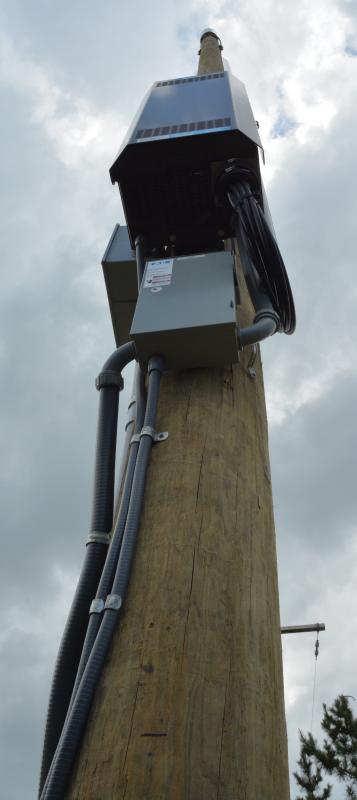If you've ever walked through a town you might have noticed tiny mini 5G cell towers on the poles of street lights. They look like little boxes however they're actually sending wireless signals from cellular providers to your phone.
These smaller towers are replacing larger specially-designed cell towers. While they're not as noticeable but they can still create problems for those who live nearby.
It is the Federal Communications Commission's Radiation Exposure Thresholds
The FCC's Radiation Exposure Thresholds define the safe limit at which one can expose to electromagnetic radiation from wireless devices. what is a safe distance from a 5g cell tower for exposure are based upon scientific research that show that RF energy can cause harm to health.
The specific absorption rate (SAR) is an indication of the amount of radiofrequency energy that is taken up by tissues. It's typically 1.6 watts per kilogram, averaged over one Gram of tissue.
But, since 5g operates at higher frequencies and has the potential to create more energy on the skin and other directly-exposed body areas. This could result in various possible harms, such as an increase in development of skin diseases such as dermatitis, cataracts and skin cancer.
Due to the possible negative effects of 5G radiation, PSU has chosen to create a general limits on power density, which is 4mW/cm2 based on the average on 1cm2, and not to exceed 30 minutes for the entire 5G spectrum at 3000 GHz. This localized limit is consistent with the highest SAR that is spatially averaged at 1.6 W/kg averaged over 1 g of tissue at 6 GHz.
The FCC's Maximum Exposure Thresholds
If you've ever used a cell phone, you probably know that the safest distance from the tower should be at least 400 meters. This is due to the power of transmission from the cell tower is significantly increased the further away the tower is.

Although this may sound like a good idea, the reality is that people who live close to towers might be more vulnerable to health problems. For example, a study from 2014 in India discovered that people who lived within 50m of cell towers experienced much more health problems than those living further away from the antennas.
But, the study revealed that those who relocated to areas that were further from cell towers experienced their symptoms improve within a few days. Other studies have revealed that exposure to high frequencies of radiofrequency electromagnetic fields (EMFs) can lead to brain tumors, cancers, and other health problems.
This is due to the fact that radiofrequency radiation, which is used for wireless communication, has the ability to penetrate the body's outer layer, which is the skin. It is vital to be aware of this since the skin functions as a shield against injury to the body, infection caused by pathogenic microorganisms and the entry of harmful substances. Additionally, what is a safe distance from a cell tower is the most important organ of the human body and is responsible for protecting other organs.
The FCC's Minimum Exposure Thresholds
The FCC's Minimum Exposure Thresholds rely on several assumptions that are not supported by scientific research. These include the erroneous assumption that exposures of a short duration to RF radiation are safe due to minimal radiation penetration in the human body (i.e. the heating of tissues).
The assumption also ignores the deeper penetration of the ELF parts of modulated RF signals as well as the effects on the body of short bursts from pulsed RF waves. These theories are not compatible with the current understanding of biological effects of RF radiation, and thus they should not be relied upon for health-protection exposure standards.
Additionally to that, ICNIRP and FCC are limiting their maximum radiation limits for local peak SARs that are based on the peak speed of spatial absorption (psSAR) which is an inadequate dosimetric tool to determine the degree of radiation exposure. Particularly the psSAR tool is not accurate when frequencies exceed 6 GHz. Furthermore, psSAR has not been tested for RF radiation with co-exposure to other agents of the environment such as sunlight. The interactions of RF radiation with other environmental agents could cause synergistic or antagonistic results. This would result in the risk of having adverse health effects. For what is a safe distance from a 5g cell tower , co-exposure to RF radiation with sunlight may increase the risk of developing skin cancer, as well as aggravate other skin diseases such as acne.
